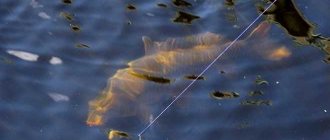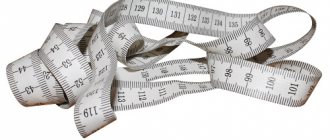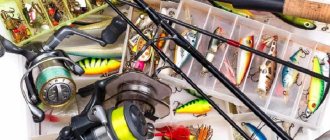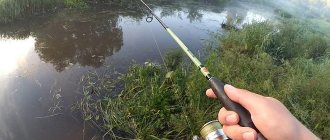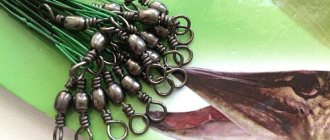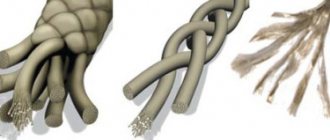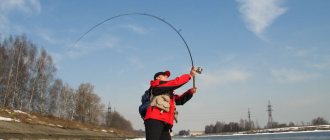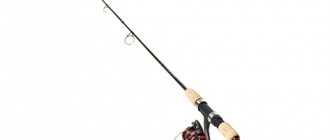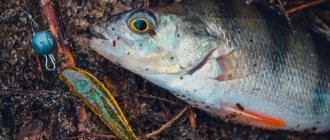Fishing line or braid is suitable for spinning; which equipment option will make fishing successful and the catch big? These questions are relevant for many lovers of quality fishing. On numerous fishing forums, the topic of whether fishing line or braid will be better for spinning is a popular topic among spinners. There is no consensus on this matter, but there are useful tips. They will help beginners quickly understand for what fishing conditions braid is suitable and when to prefer monofilament or fluorocarbon thread.
Characteristics of a good fishing line for spinning
The choice of fishing line for spinning should be made taking into account the following parameters:
- thickness;
- unwinding;
- tensile load parameters;
- shade;
- estimated catch weight;
- spinning device;
- bait used;
- fishing conditions;
- weather;
- the type of body of water where you plan to fish (lake, river, sea or pond).
It is impossible to find a universal fishing line for spinning rods. Its choice depends on many parameters, so the fisherman must independently look for a good equipment option, taking into account all the characteristics described above.
Braid and fishing line, the main differences
The choice of braided or fishing line for a spinning rod should be made taking into account the fishing location, the type of fish, and the characteristics of the fishing rod. For specific terrain conditions, fishing line may be an ideal option, but braided line may be a worse choice.
If you don’t yet know how these two types of gear differ, we suggest you study the main distinguishing features of braid and fishing line:
- Visual differences. The braid looks like a regular thread. It is opaque, so it is not suitable for catching wary fish species (for example, chub). For this kind of fishing, it is better to use a fishing line that has no color and is completely transparent. The fish will not notice it in the water, which means you have a chance to get a good catch. But for catching predatory fish species (pike), braided line will be the best choice.
- Extensibility. The braid does not stretch and does not retain its shape (it does not have the function of “memorizing” the position in which it is located in the spool or skein). The fishing line is a completely different matter. It has strong extensibility, and when stored in a reel for a long time, it curls into rings (that is, it has “memory”).
- Strength. Braid has a greater margin of safety compared to fishing line.
- Material. The fishing line is made of polyamide material - nylon. The braided cord is based on PE polyethylene fibers welded together. There are braids with a protective coating, which increases the service life of the product and allows it to be used even in salt water.
If you know the differences between fishing line and braid, you can make the right choice more often. Both elements of spinning equipment in specific conditions have either disadvantages or competitive advantages. You must independently determine what is better in your case, fishing line or braid.
Braided fishing line
Single core made of polyethylene fibers (PE). The number of cores in a braid can be: 2,4,6,8 pcs. This means that such a number of individual fibers are woven together, giving sufficient elasticity and strength. For use in salt water, expensive models are treated with a special compound that extends their service life. The main advantage that makes this type of fishing line so popular is its good strength with a small diameter.
The second important advantage is the lack of memory. When stored on a factory reel or on a spool, it does not remember the “wound” position. After unwinding, you will see that it is absolutely straight, without the “rings” that appear after being on the reel spool for a long time. If you fish with a twitch or jig, then stretch is of great importance. It should not be there, because during the jerk the bait must react clearly and immediately. If the line stretches at the moment of the jerk, this will dampen the sharpness and prevent the bait from acting as expected.
On a thin cord you can feel the bites of fish, even small ones. The casting range and accuracy are also excellent. Braided cords are divided into soft and hard. For a beginner, rigid models are best suited, due to easy and quick untangling when “beard” (tangled). But such a cord will fly closer than its brother.
The soft one, on the contrary, flies further, but it must be handled carefully, due to its delicacy. If we discard all the minor disadvantages, then braided line has a significant disadvantage, losing to monofilament - the price is several times higher than its competitor. If you have the means, there is no need to think twice; for spinning, there is nothing better than a cord.
Pros:
- there is no stretch, which gives the tackle sensitivity and the ability to hook fish efficiently;
- strength, which is greater than that of a fishing line of the same thickness;
- the lack of memory allows you to make long casts.
Wicker also has such a controversial point as good visibility. In some cases this property will be a plus, and in others it will be a minus (quite stretched).
Disadvantages of braid:
- low wear resistance in fishing areas with shells and stones;
- freezing at sub-zero temperatures;
- good visibility of the line that the fish sees.
Choosing the type of fishing line according to the fishing method
There are many ways of fishing, and each of them has its own rules.
You need to look at them when choosing fishing line or braid for spinning:
- Jig. For this type of fishing, it is better to choose braided line. Monofilament fishing lines are used in jig fishing only when good camouflage of the equipment is required. When fishing with this method, maximum sensitivity of the gear is very important. The braid has sufficient rigidity for the slightest touch of the fish to the bait to be felt (even if the equipment is cast over a long distance). It also becomes a good option for jig fishing in reservoirs with a rocky bottom. When purchasing braid for a spinning rod, it is very important to ensure that a balance is maintained between the parameters of the equipment and the rod of the rod. For example, a heavy spinning rod blank is incompatible with small-diameter braid and, conversely, a fishing rod that is too light cannot be equipped with a thick cord.
- Fishing with wobblers. A wobbler is a jerk-type bait that comes in different types. Depending on this, the fishing line is selected for it. For example, a braided cord is suitable for minnow wobblers, while fishing line is better for cranks.
- Fishing with micro jig baits. If you catch fish with a microjig bait, casting it a short distance, you can equip your spinning rod with either braid or monofilament line. The tackle should be as sensitive as possible and not scare away the fish.
- Spoon. If fishing is carried out using a spoon, then it is better to give preference to soft fishing lines, which will allow the bait to oscillate freely in the water column and attract fish.
- If you are fishing with a spinning spoon, choose a stiffer line for this purpose so that it does not twist.
To make the line twist less, install a rotating spoon with a front weight and a core on the spinning rod. Try different combinations of fishing equipment with fishing line or braid until you create the perfect spinning rod.
For which gear which is preferable?
Today's angler can catch pike using the following gear:
- summer and winter spinning;
- mugs;
- summer and winter vents;
- live bait float rod.
Spinning is the most modern equipment that can be used for pike fishing. The variety of spinning fishing methods is quite large. And each of them has its own specific selection of components.
Twitching, jigging and trolling are spinning fishing methods that require great sensitivity and reliability of equipment. Therefore, if fishing is done using these methods, then braided fishing will be optimal in this case.
The use of spinners, both rotating and oscillating, requires the use of monofilament fishing line. It is less noticeable and does not alarm pike so much in the upper layers of the reservoir. Fishing with a rig with a dead fish is more effective when using a fishing line, since a springy fishing line makes casting the bait softer, which injures the bait less and is enough for a greater number of casts.
Ultralight spinning fishing requires minimal windage and invisibility of equipment in the water. Therefore, in this case, monofilament line or fluorocarbon are suitable.
Given the high abrasion resistance of fluorocarbon, it can be used as a leader when fishing for small grass pike. When fishing for larger pike, a steel leader is a must, because monofilament line, braided line, and fluorocarbon will be easily rubbed by pike teeth.
Winter lure requires the use of delicate and inconspicuous fishing lines. This is due to the winter passivity and caution of fish in winter. Typically, ice fishing line is more resistant to cold water and is labeled "ICE".
Catching pike with mugs can be accompanied by very high cutting pressure on the hand. Therefore, a thick nylon cord is used as a base, to which a monofilament leader is attached, after which a steel leash is attached.
For summer and winter girders, it is advisable to use fishing line. In winter, the temperature does not allow the use of wicker. A frozen braid will have a damaged weave, and it can very quickly become unusable. And in summer, fishing line has superiority over braided line because it is less noticeable. For the zherlitsa, this question is very relevant, because this is a passive method of fishing and the striped predator can easily examine the bait and all the equipment.
A live bait float rod requires soft casting of live bait, delicacy and inconspicuousness of the equipment, so in this case a monofilament fishing line would be preferable.
fishelovka.com
Line characteristics matter!
Fishing with a spinning rod can be successful, but this depends on the accuracy and distance of casting the tackle. This is why it is so important to take into account the diameter of the fishing line you are using. The thinner it is, the further the bait will fly.
The technical characteristics of the fishing line greatly influence the success of fishing.
These include:
- strength (when choosing a fishing line for a spinning rod, you should pay special attention to this parameter, because modern fishing lines have higher strength with a smaller diameter);
- resistance to exposure to ultraviolet rays, which greatly reduce the service life of the fishing line, regardless of its parameters;
- resistance to abrasion (the fishing line constantly rubs during fishing against the rings of the spinning tackle, the reel spool, the bottom of the reservoir, strewn with shell rock or sharp stones, so it is very desirable that at the most crucial moment this part of the fishing rod equipment does not let the fisherman down).
Experienced fishermen stock up on several reel spools, on which fishing lines of different diameters and thicknesses are wound. They change them until they achieve the desired result and achieve an increase in the number of fish caught.
Line and type of fish
Fishing enthusiasts who have been using spinning rods for a long time are well acquainted with all types of equipment and understand that sometimes it is better to select fishing line according to the type of fish.
Use the following helpful guidelines for making this choice:
- Nowadays you can find a large assortment of fishing lines on sale (even for catching exotic species of fish that live in the waters of America or Japan). You can successfully use exotic fishing line models for fishing in lakes and rivers of our country.
- If you know the body of water where you plan to fish well, select a fishing line for the fish that live in it.
- Fishing on an unfamiliar body of water requires choosing a universal fishing line for a spinning rod. If there is a predatory fish in a river or lake, when it bites, it will not tear the equipment with its teeth.
- If you suspect that there are pikes in the pond, be sure to use a strong leash on your spinning rod. Otherwise, the fish will tear the tackle with its sharp teeth.
- For beginners in the field of fishing, it is better to equip your spinning rod with monofilament. It is easier to use compared to braided line and does not require special skills from the fisherman.
The number of fish you catch depends on your ability to use a braided fishing line correctly. If you are new to the nuances of successful fishing, choose regular fishing line.
Fishing line or braid: comparative characteristics
You need to know that the fishing line needs to be selected depending on where and how the fish will be caught. Both monofilament fishing line and braided line have parameters, based on which you can choose the appropriate option.
So what should you choose – fishing line or braid ? Products should be distinguished by:
- Sensitivity. Since braid does not tend to stretch, its level of sensitivity is quite high. Therefore, it is perfect for long casts. Due to its stretchability, monofilament is best used at close distances.
- Ease of fishing. Although braided fishing line has absolute inextensibility, when fishing, especially if the fish is large, there is every chance of being left without a catch and a leash. Monofilament fishing line will help compensate for fish jerks. Fishermen prefer monofilament when fishing in small bodies of water, while still managing to catch quite large prey.
- Strength and diameter. High strength and minimal line diameter provide maximum possibilities. If the diameter of the cord and fishing line are the same, the cord will have much greater strength. And the smaller the diameter, the better. Where the current is strong, it is necessary to fish with reliable gear. Therefore, braid is ideal.
- Ability to attract debris and susceptibility to breakage. It’s bad when, in the process of fishing with fish, various debris sticks to the tackle, which clogs the passage rings. In this regard, wicker loses. It is better to refrain from it when there are a lot of trees, duckweed and other thickets nearby. The convenience of the fishing line is that during the cold season ice will not form on it, which cannot be said about braided line. Unfortunately, the cord breaks much more often, especially if it passes along a bottom strewn with many shells. Often fishermen use a shock leader along with braided line.
- Cost and expiration date. Of course, you want to buy a product cheaper, but in pursuit of low prices you can lose quality. If you compare fishing line and cord, the first one is cheaper, but the braided line will last much longer. You will have to buy a new monofilament literally in 2 years, but with braid you can fish for about four years.
Let's sum it up
There is no clear answer to the question of which is better, fishing line or braid.
It is necessary to take into account the experience of experienced fishermen and know the following useful information:
- For spinning fishing, you can use all existing types of fishing lines.
- There are methods of fishing for fish in which only a braided cord can be used.
- Braid has greater sensitivity, so it reacts more strongly to wiring when fishing with a wobbler or spinner.
- The braid has a large margin of safety. Therefore, it is suitable for fishing in reservoirs with a littered bottom (where snags are possible).
- When fishing with a rotating spoon, it is better to equip the spinning rod with monofilament fishing line.
- It is better to catch cautious fish that make weak bites using a monofilament fishing line.
- For catching predatory fish, a braided line is best suited.
- It is also better to catch trophy fish using monofilament equipment.
- The rocky river bottom is not the best place for fishing with a spinning rod equipped with braided line. Here it is better to equip it with transparent fishing line.
- In winter, when the temperature outside is below freezing, the braided line will freeze heavily, so it is better to equip a spinning rod with fishing line.
When choosing between fishing line and braid, every fisherman should certainly take into account the recommendations of more experienced colleagues. However, you should not neglect your own convenience. Successful fishing is possible even if you do not take into account the advice on choosing this or that equipment.
